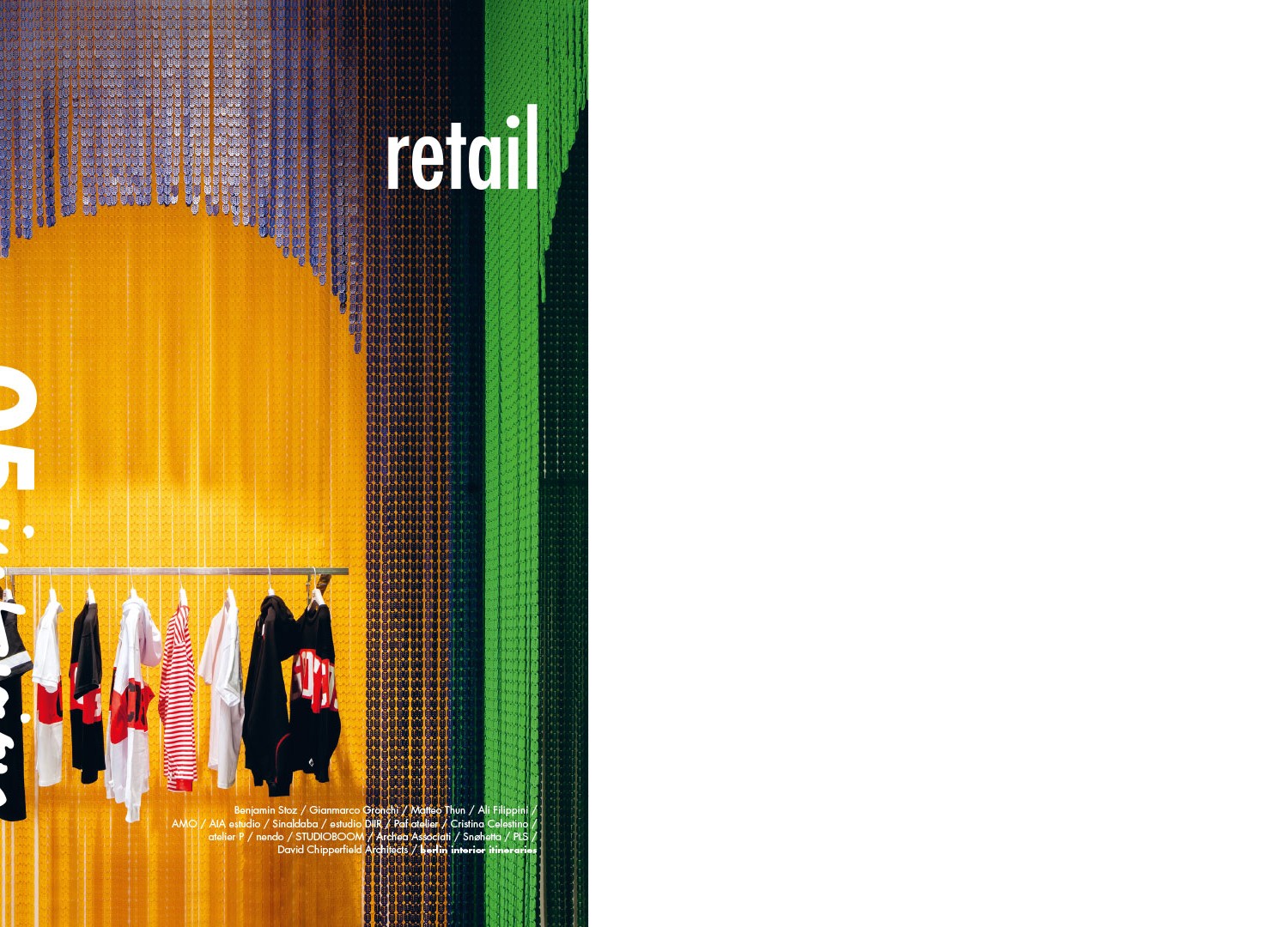
A frequent error is classifying retail spaces as pertaining to the sector of interior design, when what they really are is works of architecture whose context is not given by their surroundings, in terms of urban landscapes, but by the goods and services that are handled inside, in the showrooms and displays. Increasingly, architecture is asked to construct a virtual landscape inhabited by objects or consumer goods that are the dominant elements of a set designed to exalt the characteristics of the particular product. The visitor to the shop is a guest, a tourist in a city, and as such observes, admires, explores, touches, tries and is obviously urged to purchase by multiple messages, of which the architectural space and its decor are fundamental elements in fostering that desire of possession. We could also compare the interior of the shop to a theater, and try to imagine the work of the architect as a complex activity, similar to the work of the set designer and director combined; because like the latter, he must work to set the scene of a story that every product is called upon to narrate, and like the former, he must imagine and design the location and the stage on which that scene takes place. But unlike the theater, the spectator, that is, the shopper, is himself or herself part of the scene and that vicinity requires perfect execution of the details, and extreme attention to the arrangements, as well as the thoughtful selection of materials used. Another requisite that makes the shop similar to the world of live entertainment, or more in general, to the world of exhibition, consists of the extreme attention that must be devoted to the study of correct lighting because, paraphrasing the well-known definition of Corbusier, it is absolutely true that the architecture – of the shop in this case – is all about the play of the products under the spotlight. On this subject, the greatest architects of the 20th century have honed their skills: from Frank Lloyd Wright to Carlo Scarpa, from Hans Hollein – famous for his candle shop in Vienna – to contemporaries like Rem Koolhaas and Herzog & de Meuron for Prada, David Chipperfield for Versace and many other authors known for works of very different dimensions, just to say that retail architecture is not the child of a lesser god.
Download cover
Download table of contents
Download introduction of Marco Casamonti


